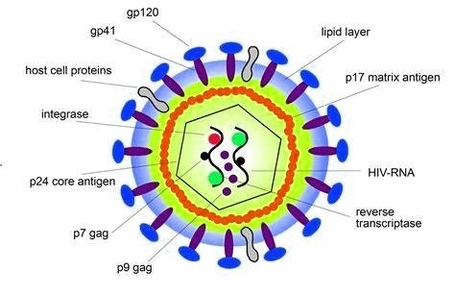Structure of the HIV Virus
The Human Immunodeficiency Virus (HIV) is a complex entity composed of various components, each playing a crucial role in the virus’s life cycle.
1. Viral Envelope and Matrix: The outermost layer of the HIV virion is a lipid bilayer membrane, derived from the host cell it last infected. This envelope is associated with a matrix that encloses the inner components.
2. Capsid: Enclosed by the matrix is the capsid, a conical structure that houses the virus’s genetic material and several enzymes. The capsid is composed of the viral protein p24, typical of lentiviruses.
3. Genome: The HIV genome consists of two noncovalently linked, unspliced, positive-sense single-stranded RNA (ssRNA) molecules. These two RNA strands are not independent but form a compact dimer within the virion. The complete sequence of the HIV-1 genome has been solved to single-nucleotide resolution.
4. Enzymes and Proteins: The HIV virion contains several enzymes, including reverse transcriptase, integrase, and protease. These enzymes, along with minor proteins and the major core protein, are crucial for the virus’s replication process. The HIV genome encodes eight viral proteins that play essential roles during the HIV life cycle.
5. Viral Proteins: HIV is composed of 15 types of viral proteins. These proteins, along with a few proteins from the last host cell it infected, allow the virus to infect cells of the immune system and force them to build new copies of the virus.
The structure of HIV is distinct from other retroviruses. The virion is approximately 100 nm in diameter. The presence of two RNA strands contributes to HIV-1 recombination, increasing genetic diversity. It also allows the reverse transcriptase to switch templates when encountering a break in the viral RNA, thus completing the reverse transcription without loss of genetic information. The dimeric nature of the RNA genome may also play a structural role in viral replication.
In conclusion, the structure of HIV is intricate, with each component playing a specific role in the virus’s life cycle. Understanding this structure has been pivotal in the development of treatments for HIV infection and provides hope for the development of a vaccine..


